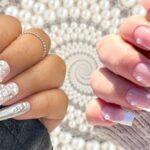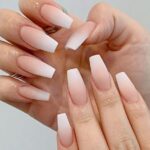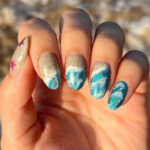If you have a nose ring, then it’s likely that at some point you will want to remove it. Whether you’re changing your jewelry, taking a break from wearing a nose ring, or even because of an infection, it’s important to know how to take out a nose ring safely and properly. In this article, we’ll go over the step-by-step process for removing a nose ring, as well as answer some frequently asked questions about the subject.

What You Will Need to Take Out a Nose Ring
Before you start the process of removing a nose ring, make sure you have the following items:
- Clean hands
- Rubbing alcohol or saline solution
- Cotton swabs or balls
- A mirror
Step-by-Step Guide on How to Take Out a Nose Ring
Step 1: Wash Your Hands
Start by washing your hands thoroughly with soap and water. This will help prevent any bacteria or dirt from getting into your piercing during the removal process.
Step 2: Find a Well-lit Area
Choose a well-lit area with a mirror where you can comfortably see your nose and the nose ring. Good lighting will make the process easier and safer.
Step 3: Soften the Area (Optional)
If you find it challenging to remove the nose ring, you can apply a warm compress to the outside of your nose. This can help relax the skin and tissues around the piercing, making it easier to take out the jewelry.
Step 4: Prepare the Nose Ring
Carefully examine the nose ring to identify the type and design. Most nose rings have a twisted or corkscrew design, while others may have a small ball or stud on the inside. Familiarize yourself with how it’s structured before proceeding.
Step 5: Twist the Nose Ring
Gently twist the nose ring in the same direction it was initially inserted. Most nose rings are designed to follow the natural curve of the nostril, so follow that path while twisting.
Step 6: Steady Your Hand
Use one hand to hold your nostril steady while you twist the nose ring with the other hand. Steady pressure and a slow, gentle twisting motion should help the ring come out smoothly.
Step 7: Remove the Nose Ring
As you twist the nose ring, you’ll feel it becoming looser. Once it’s loose enough, you can carefully slide it out of your piercing. Be patient and take your time; avoid pulling or tugging on the jewelry.
Step 8: Clean the Jewelry and Piercing
After removing the nose ring, clean it with a mild soap and water solution. Similarly, cleanse the piercing site with saline solution or a saline wound wash to keep it clean and prevent infection.
Step 9: Inspect the Piercing
Take a moment to inspect your piercing site for any signs of irritation, redness, or infection. If you notice anything unusual, consult a professional piercer or healthcare provider.
Step 10: Reinserting the Nose Ring (Optional)
If you plan to reinsert the same nose ring or switch to a new one, make sure both the jewelry and the piercing site are clean. Gently slide the nose ring back into the piercing, following the natural curve of your nostril.
Step 11: Wash Your Hands Again
Finally, wash your hands once more after completing the process to ensure that your piercing remains clean and free from potential contaminants.
FAQs
- Will removing a nose ring hurt? It shouldn’t hurt if done correctly. Make sure to be gentle and take your time when removing a nose ring.
- Can I remove my nose ring if it’s infected? If you suspect that your nose ring is infected, do not attempt to remove it yourself. Seek medical advice from a healthcare professional.
- How often should I take out my nose ring? It’s a good idea to take out your nose ring every few weeks to clean it properly. However, if you’re having issues with the piercing or jewelry, you may need to remove it more often.
- Can I take out my nose ring after getting it pierced? It’s best to leave your nose ring in for the first few months after getting it pierced to allow it to fully heal. After that, you can remove it as needed.
- What should I do if I can’t remove my nose ring? If you’re having trouble removing your nose ring or are experiencing pain, contact a professional piercer or healthcare provider for assistance.






